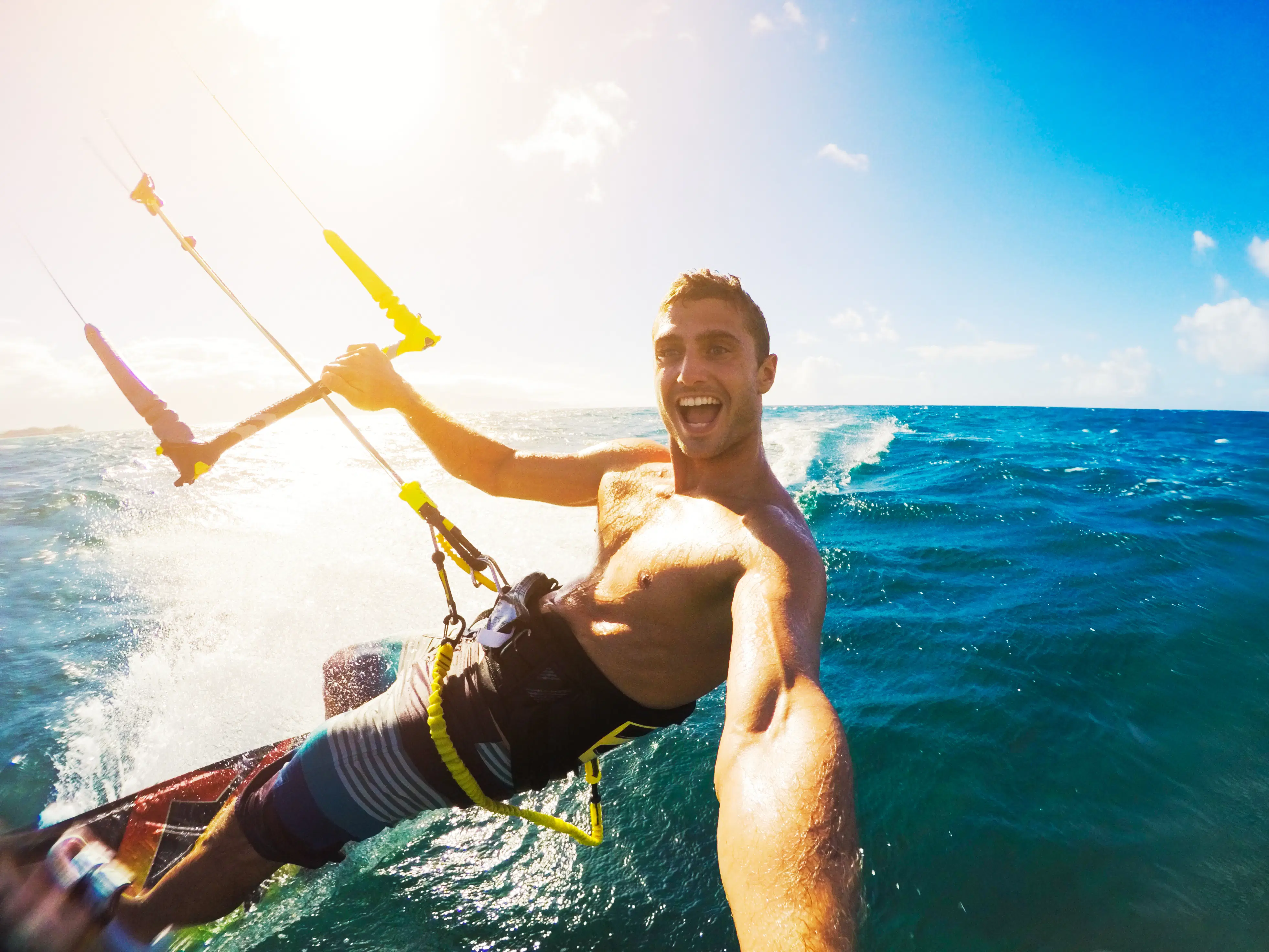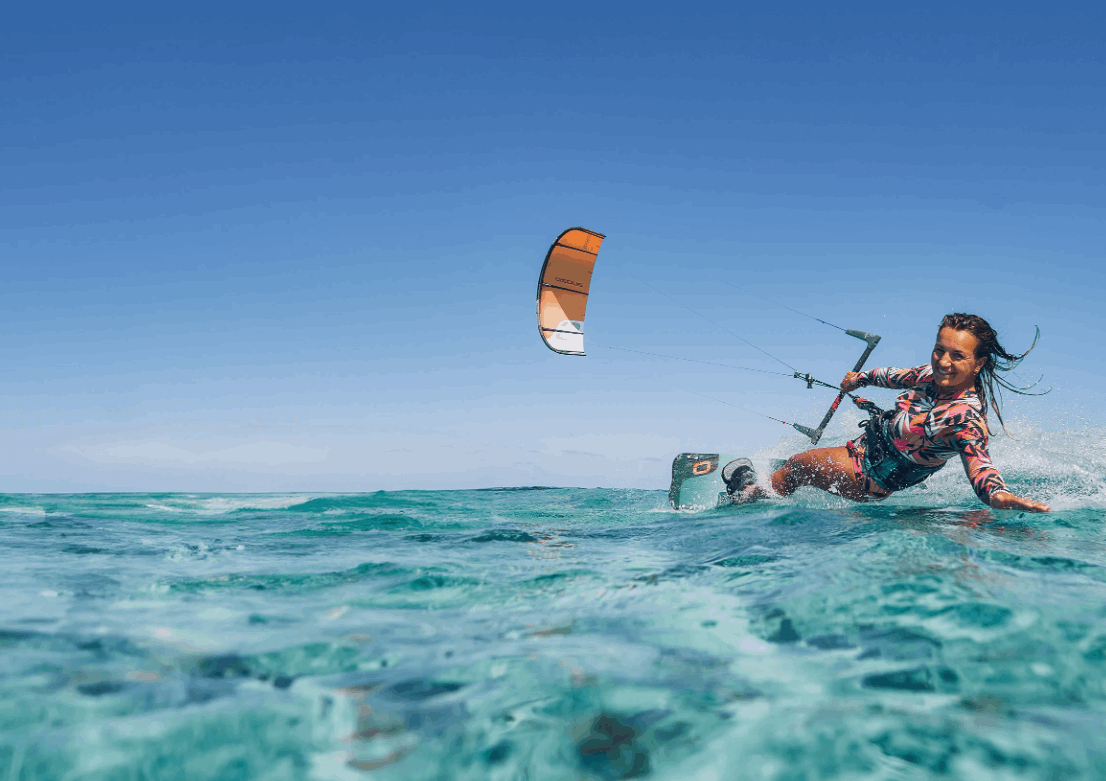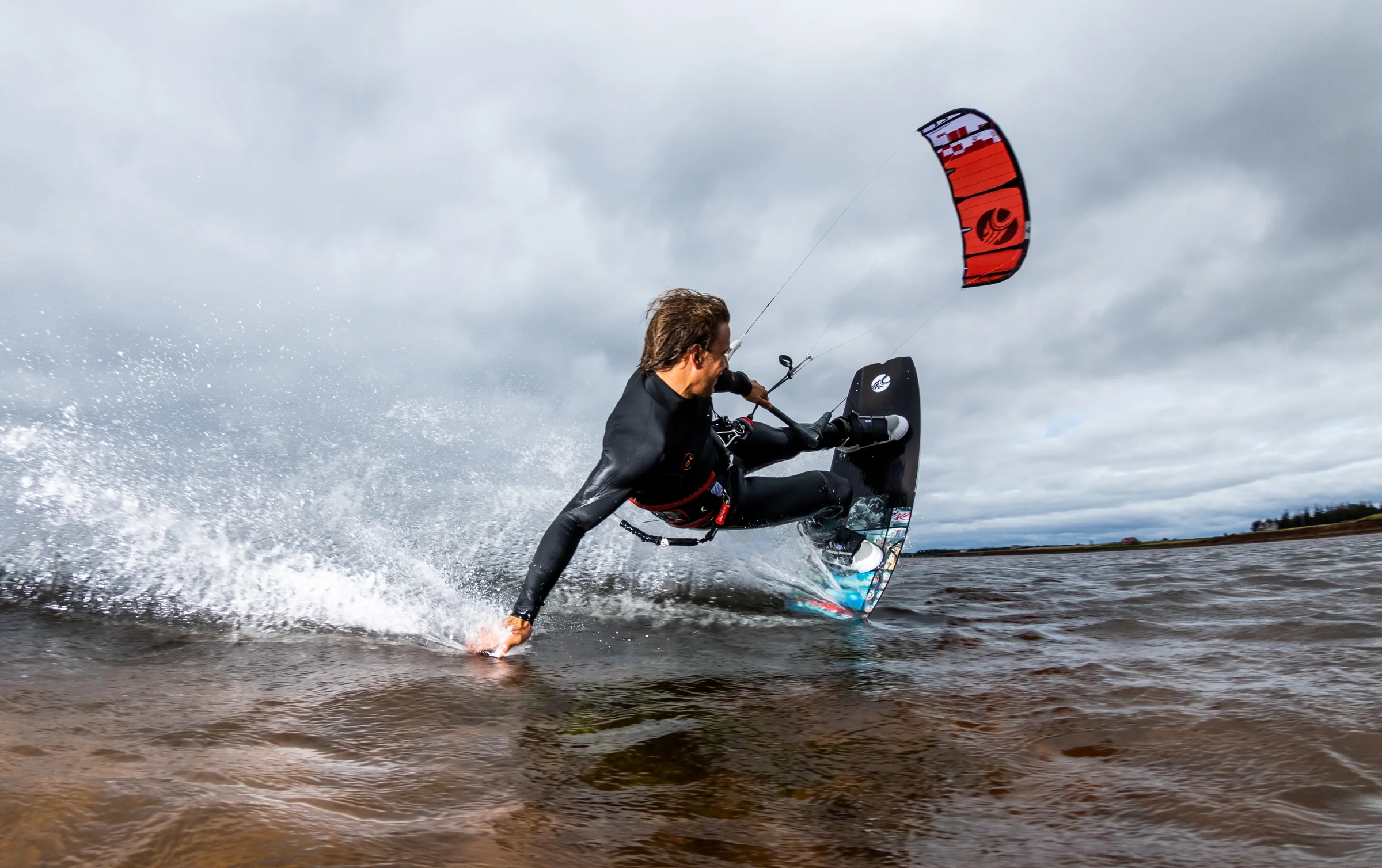
Beginner's Guide to Wing Foiling Lessons: What to Expect
Keen to dive into wing foiling lessons? Discover what to expect and how your journey in mastering this exhilarating sport begins.

Keen to dive into wing foiling lessons? Discover what to expect and how your journey in mastering this exhilarating sport begins.

If you're curious about wing foiling lessons, you're in for a structured and informative experience. You'll start by familiarizing yourself with the equipment and essential safety protocols, ensuring you feel secure on the water. As you progress, expect hands-on training in wing handling and balance, typically split between land and water practice. You'll want to prepare with the right gear and mindset. But what happens once you leave your first lesson? Understanding the journey ahead can make all the difference in mastering this thrilling sport.
When you dive into wing foiling, you'll discover it's an exhilarating blend of surfing, kitesurfing, and windsurfing. Imagine gliding over the water with the wind in your hair and the freedom to ride waves like never before. The sport allows you to harness the wind's power with a wing, while the board lifts you above the surface, creating a unique experience.
Starting with wing foiling lessons is essential to grasp the fundamentals. You'll learn how to control the wing, balance on the board, and navigate the water effectively. If you're in South Australia, consider taking kitesurfing lessons in Adelaide for a solid foundation, as many principles overlap. For those passionate about water sports, Kitesurfing South Australia offers a range of options to build your skills and confidence on the water.
As you progress, you'll appreciate the nuances of wing foiling, including steering techniques and adjusting your stance. The thrill of riding the wind and the waves will keep you coming back for more.
Before you know it, you'll be confidently exploring the stunning coastlines of South Australia. So gear up, grab your wing, and get ready to embrace the adventure that lies ahead in this exciting sport.
RIDE Kitesurfing
1 The Foreshore Opposite Everard Street &, Lady Gowrie Dr
Largs Bay SA 5016
Phone: 0417 858 641
Email: info@ridekitesurfing.com.au
Website: https://ridekitesurfing.com.au/
Before heading to your wing foiling lesson, it's important to pack a few essentials to ensure you have a smooth and enjoyable experience.
Start with a swimsuit or wetsuit, depending on the water temperature. A quick-dry towel is also a must, as you'll likely get wet during the lesson.
Don't forget to bring sunscreen to protect your skin from those UV rays. Sunglasses with a strap or a sun hat can help shield your eyes from glare and sun exposure too.
If you have your own gear, bring it along, but remember that all necessary equipment is usually provided by your instructor.
Water and snacks are vital to keep your energy up, especially if you're out on the water for a while.
Lastly, having a change of clothes for after your lesson will keep you comfortable as you head home.

At RIDE, each wing foiling lesson is structured to maximize your learning experience while keeping it enjoyable. Your lesson typically starts with a brief introduction, where your instructor will explain the basics of wing foiling and the equipment you'll be using. This initial discussion is crucial, as it sets the foundation for your practice on the water.
Next, you'll transition to practical exercises. You can expect hands-on training that includes practicing how to hold the wing, balance on the board, and maneuver through the water. Your instructor will provide real-time feedback to help you improve your technique.
Lessons usually last around two hours, allowing ample time to master essential skills while keeping you engaged. During this time, you'll spend roughly half on land learning techniques and the other half on the water applying what you've learned.
As you progress, the structure will adapt to suit your skill level. Whether you're a complete beginner or looking to refine your technique, your lessons will be tailored to ensure you have fun while gaining confidence on the water.
As you start your wing foiling journey, keeping safety in mind is key to enjoying the sport. Always wear a life jacket and a helmet to protect yourself from potential falls and water impacts.
Check the weather conditions before heading out; avoid strong winds or storms that could make your experience dangerous.
Make sure you're familiar with your equipment. Spend time practicing how to handle the wing on land before taking it to the water. This will help you feel more comfortable and aware of how the wing behaves.
When you're ready to launch, ensure the area is clear of other water users to prevent collisions.
Stay aware of your surroundings and keep an eye out for other surfers, swimmers, or obstacles in the water. It's also wise to practice in designated areas meant for wing foiling, especially as a beginner.
Lastly, never go out alone. Always have a buddy with you who can help in case of emergencies.
Following these safety tips won't only enhance your experience but also keep you and others safe while you enjoy the thrill of wing foiling.
Progressing after your wing foiling lessons is an exciting phase that can greatly enhance your skills and confidence on the water. After mastering the basics, the key is to practice regularly. Try to get out on the water as often as possible. The more you practice, the quicker you'll improve.
Start by focusing on your stance and balance. Fine-tune your movements to become more fluid. Experiment with different conditions—varying wind speeds and water surfaces will challenge you and build versatility.
Don't hesitate to revisit lessons; refining techniques with your instructor can significantly speed up progress.
Also, consider joining a local wing foiling community.
Surrounding yourself with fellow enthusiasts provides encouragement and allows you to share tips and experiences. Participate in group sessions or events to learn from others and gain insights into common challenges.
Lastly, invest in your own gear. Having your own equipment means you can practice whenever you want, leading to faster improvements.
Learning kitesurfing typically takes a few lessons over a couple of weekends. You'll gain confidence quickly with practice, but everyone learns at their own pace, so don't rush—enjoy the process and have fun!
You can introduce your child to kitesurfing around the age of 8, depending on their physical ability and confidence. It's crucial they feel comfortable, so start with lessons tailored for younger learners in safe environments.
You don't need to be super fit to start kitesurfing. Basic physical fitness helps, but it's more about your willingness to learn. Instructors will guide you through the techniques at your own pace.
Yes, you can use your own equipment during lessons. Just make sure it's suitable for your skill level. Our instructors will help you get the most out of your gear while ensuring your safety.
If the weather's unsuitable for lessons, you'll be informed promptly. We prioritize your safety, so we'll reschedule or offer alternative arrangements. Don't worry, you'll still get the experience you signed up for!